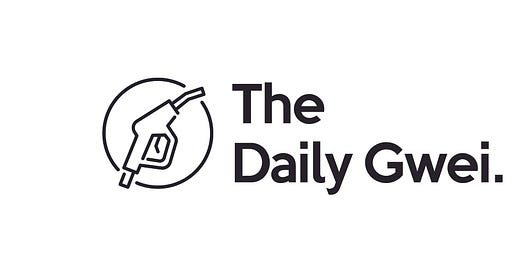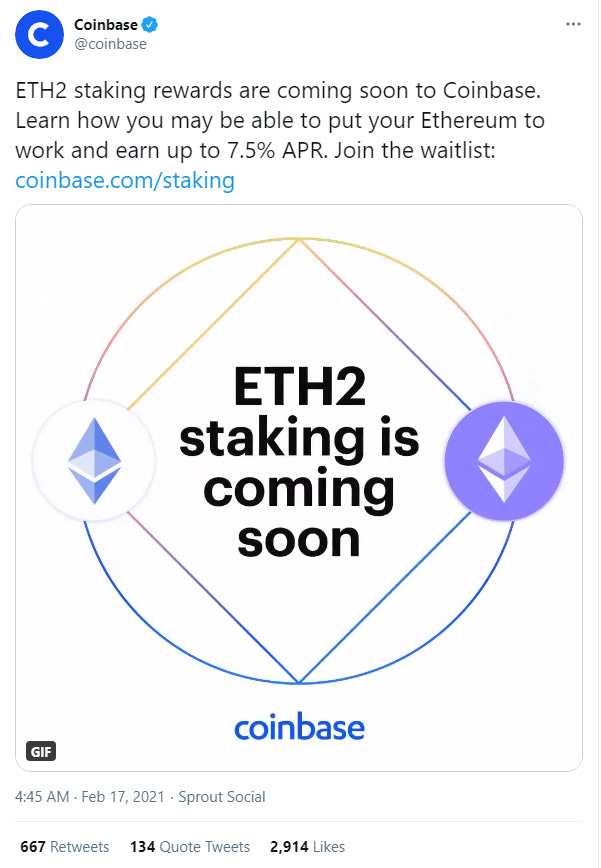Yesterday, Coinbase announced that their eth2 staking service will be launching soon and opened up a wait-list for people to sign up to. Now, Coinbase isn’t the first centralized exchange to offer a staking service (Kraken already has one up and running which currently makes up over 10% of the total stake) but in today’s piece I wanted to talk about the importance of staking on your own.
Source: https://twitter.com/coinbase/status/1361733385782259719
The allure of staking through a centralized provider is strong for many reasons including: no 32 ETH minimum stake requirement, no requirement to run your own hardware and software, no lock-up requirement (aka instant liquidity) and, in some cases, insured deposits. This makes it incredibly enticing for people as it really is just a 1-click staking solution where they can begin earning high single digit returns on their ETH.
Now, in saying this, I strongly believe that if you have the means to do so then you should not delegate your staking duties to a centralized operator and stake using your own software and hardware. It’s not actually that difficult to get started on your own and there are plenty of guides to help you along like this one and this one from Bankless or Somer Esat’s guides here. There’s also an incredibly helpful community called ‘EthStaker’ and you can join their Discord channel here.
The benefits of staking on your own include: complete control over your own staking setup, you help to keep the eth2 network decentralized, no having to trust a 3rd party, no fee take for the provider (Coinbase charges a 25% fee, for example) and it’s a great learning experience to both setup & maintain an eth2 validator. Now, if you don’t have the 32 ETH required to stake on your own, there are various staking solutions out there for you but unfortunately most of them are centralized (Rocketpool is aiming to be a decentralized solution but it isn’t out yet).
I of course run my own validators on a purpose-built staking PC and honestly it feels amazing to watch it just tick along knowing that I’m helping to secure the network while getting rewarded for it (stacking more ETH is always a beautiful sight). I’m doing it on Windows using the Prysm client but you can of course stake on both Linux and MacOS using any client you so choose (Prysm, Lighthouse, Nimbus or Teku). I’m not a super technical person or anything but I can attest to the setup process being quite easy and straight-forward.
In saying all of the above, I don’t blame anyone for simply using a centralized provider to stake their ETH at this time because the decentralized solution’s aren’t ready yet and 32 ETH is currently worth $58,000. On top of this, your ETH is locked up until the eth1 <> eth2 merger which is due sometime next year. Though, if you have 32 or more ETH and you are comfortable with locking it up then I strongly encourage you to stake using your own hardware and software - the Ethereum network will thank you for it!
Have a great day everyone,
Anthony Sassano
Join the Daily Gwei Ecosystem
All information presented above is for educational purposes only and should not be taken as investment advice.





